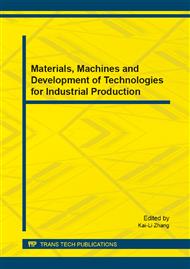p.367
p.376
p.380
p.388
p.392
p.397
p.401
p.405
p.410
Development and Evaluation of a Rapid Detection Technology of Streptococcus Pneumoniae Isolates from Specimen without Culture Based on LAMP and Bioinformatics
Abstract:
Streptococcus pneumoniae (S. pneumoniae) was one common pathogen that caused pneumonia, meningitis, otitis media, and sepsis. The traditional culture methods costed long time and omission often existed. A new method was developed based on Loop-mediated Isothermal Amplification (LAMP). A series of primers of autolysin (lytA) from S. pneumoniae were designed with specific primers soft, and set up LAMP system in detection of S. pneumoniae. Comparison of specificity and sensitivity results with culture and PCR method in 50 samples collected from patients with respiratory infections. The data demonstrated that the selected primers and reaction system in LAMP were respond to S. pneumoniae,not cross reacted to others bacteria. The detection of sensitivity to LAMP was 102 CFU/mL. All of clinical specimens in the test, 9 cases (18.0%) were confirmed to be positive as S. pneumoniae,whereas, only 4(8.0%) were diagnosed by culture method. The LAMP technology has a specific, simple and accurate characteristic in differentiation S. Pneumoniae from clinical specimen.
Info:
Periodical:
Pages:
392-396
Citation:
Online since:
August 2014
Authors:
Keywords:
Price:
Сopyright:
© 2014 Trans Tech Publications Ltd. All Rights Reserved
Share:
Citation:


